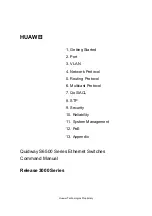
Chapter 7: Converter Applications
Manual Number: 00650-014-4
Page 7-1
Chapter 7: A/D Converter Applications
Connecting Analog Inputs
The AD12-8 provides eight channels of single-ended input. Single-ended configuration means that
you have only one input relative to ground. A differential input provides two inputs and the signal
corresponds to the voltage difference between these two inputs. The single-ended configuration is
suitable only for floating sources; i.e., a signal source that does not have any connection to
ground at the source. To use differential connections to the AD12-8, the AT16-P multiplexer card
must be added. The AT16-P supplies 16 channels of differential input.
Thus, if the signal source has one side connected to a local ground, the AD12-8/AT16-P combina-
tions should be used. A differential input responds only to difference signals between the high and
low inputs. In practice, the signal source ground will not be at exactly the same voltage as the
computer ground where the AD12-8/AT16-P combination is because the two grounds are con-
nected through ground returns of the equipment and the building wiring. The difference between
the ground voltages forms a common mode voltage (i.e., a voltage common to both inputs) that a
differential input rejects up to a certain limit. In the case of the AD12-8/AT16-P combination, the
common mode limit is ±10V.
Its important to understand the difference between input types, how to use them effectively, and
how to avoid ground loops. Misuse of inputs is the most common difficulty that users experience
in applying and obtaining the best performance from data acquisition systems.
Comments on Noise Interference
Noise is generally introduced into analog measurements from two sources: (a) ground loops and
(b) external noise. In both cases, use of good wiring practice will reduce and sometimes eliminate
the noise. A key point with regard to ground or return wiring is that in an analog/digital system,
digital circuits should have a separate ground system from analog circuits with only a single com-
mon point. The reason for separate ground busses is that digital circuits, by their very nature,
generate considerable high frequency noise as they rapidly change state.
Ground loops occur when AC noise and DC offset are added in series with a grounded signal
source if the source ground is at a different potential than the A/Ds analog ground. If there is an
ohmic resistance between the source ground and the A/Ds ground, the resultant current flow causes
a voltage to be developed and a ground loop exists. If the signal is measured in a single-ended
mode, that voltage is added to the source signal thereby creating an error. The best way to avoid
ground loop errors is to use good wiring practice as described above. If this is not possible, use of
a differential measurement mode will minimize errors.















































